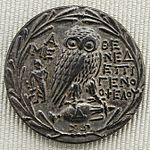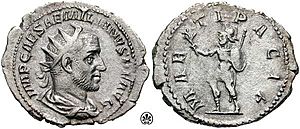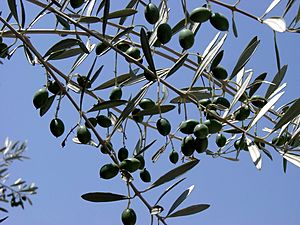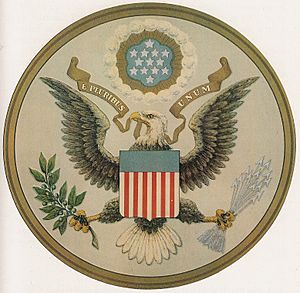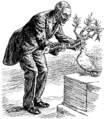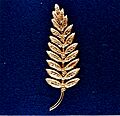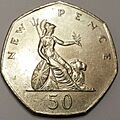Olive branch facts for kids
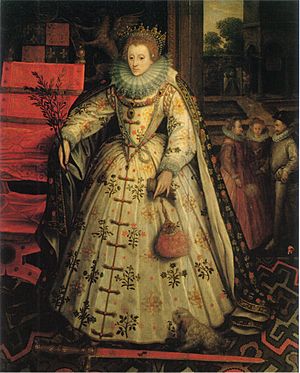
The olive branch is a special symbol of peace and victory. It has been used for a very long time, especially in ancient Greece and Rome. People in the Mediterranean area have always seen it as a sign of peace. Today, it is known all over the world for this meaning.
Contents
The Olive Branch in Ancient Times
In ancient Greece, people who asked for help or protection would carry an olive branch. This showed they were asking for peace and were not a threat. They would hold it when talking to powerful people or when praying in temples.
Greek Myths and Olympic Victories
In a famous Greek myth, the goddess Athena competed with Poseidon for control of the city of Athens. Poseidon struck the ground with his trident, and a well of seawater appeared. Athena planted the first olive tree next to the well. The other gods and goddesses decided that Athena's gift was better. So, Athens was named after her.
Because of this, olive wreaths were very important. Brides wore them, and they were given to winners at the Olympic Games.
Roman Symbols of Peace
The olive branch was also a symbol for the Roman goddess Pax. Pax was the goddess of peace. You can see her holding an olive branch on old Roman coins. For example, a coin from the Roman emperor Vespasian (made in 70-71 AD) shows Pax holding an olive branch.
The Roman poet Virgil wrote about the olive branch as a sign of peace. In his famous poem, the Aeneid, a hero named Aeneas holds an olive branch. He uses it to show that he brings peace to new lands.
The Romans also had a god of war named Mars. But he also had a peaceful side, called Mars Pacifer, meaning "Mars the bringer of Peace." Coins from the later Roman Empire show Mars Pacifer holding an olive branch. This showed that even the god of war could bring peace.
During the time of the Pax Romana (Roman Peace), the olive branch became an even stronger symbol. Messengers often carried olive branches to show they came in peace.
The Olive Branch in Early Christianity
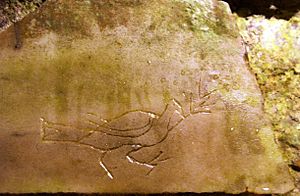
The olive branch is often seen with a dove in early Christian art. The dove comes from the Bible, where it represents the Holy Spirit. The olive branch comes from older symbols of peace. Early Christians used the dove and olive branch to show peace on their tombs.
For example, in the Catacomb of Priscilla in Rome, there is a painting of three men. Above them, a dove flies with a branch. In another Roman catacomb, a carving shows a dove with a branch flying towards a figure named Eirene (Peace).
A Christian writer named Tertullian (around 160–220 AD) wrote about Noah's dove. In the Bible, Noah sent a dove out from his ark. The dove returned with an olive branch. This showed that the great flood was ending and peace was returning to the world. Tertullian compared this to the Holy Spirit bringing God's peace.
St Augustine, another important Christian writer, also wrote about this. He said that the olive branch the dove brought back to the ark meant "never-ending peace."
Modern Uses of the Olive Branch
The olive branch has been used as a symbol of peace in modern times too. In the 1700s, it was popular in Britain, France, and America. A painting of King Louis XV from 1729 shows him offering an olive branch to Europe.
Early American money also used the symbol. A £2 note from North Carolina (1771) showed a dove and olive branch with the words "Peace restored." A Georgia $40 note (1778) showed a dove, olive branch, and a hand holding a dagger. This meant "Either war or peace, prepared for both."
In January 1775, a picture in the London Magazine showed the Goddess of Peace bringing an olive branch to America and Britain. Later that year, the American Continental Congress sent a letter to Great Britain. They hoped to avoid a big war. This letter was called the Olive Branch Petition.
On July 4, 1776, the Great Seal of the United States was created. This seal has an eagle holding an olive branch in its right claw. The olive branch has thirteen olives and thirteen leaves. These represent the thirteen original colonies. The eagle also holds a bundle of thirteen arrows. The olive branch and arrows show that the United States has the power to choose between peace and war.
Today, the flag of Cyprus and coat of arms of Cyprus both use olive branches. They are symbols of peace and show the country's ancient Greek history. The flag of Eritrea also has olive branches. You can also see olive branches on many police badges around the world. They show that police work to keep the peace.
The emblem and flag of the United Nations also have two olive branches. They surround a map of the world. This shows that the United Nations works for world peace.
Other Meanings and Uses
The olive branch is also a symbol of peace in Arab folk traditions. In 1974, Palestinian leader Yasser Arafat spoke at the UN General Assembly. He held an olive branch and said, "Today I have come bearing an olive branch and a freedom-fighter's gun. Do not let the olive branch fall from my hand." This showed his hope for peace, but also his readiness to fight for freedom.
Some towns are named Olive Branch to show peaceful living. An example is Olive Branch, Mississippi. Also, some names like "Oliver" and "Olivier" come from words related to the olive branch.
Images for kids
-
A Greek silver coin from Athens. It shows the goddess Athena and an owl with an olive branch. This coin is from the 6th century BC.
-
A wall painting from the early Christian Catacomb of Priscilla in Rome. It shows three figures in a fire, with a dove flying above them holding a branch. This painting is from the 3rd or 4th century AD.
-
A painting by James Thornhill (around 1700). It shows King William III and Queen Mary II receiving an olive branch from Peace.
-
A cartoon from Punch in 1919. It shows the Dove of Peace struggling to carry a very large olive branch.
-
A golden olive branch left on the Moon by Neil Armstrong during the 1969 Apollo 11 mission. It was a symbol of peace.
-
A Fifty pence British coin from the late 20th century. It shows Britannia with a trident and an olive branch.
See also
 In Spanish: Rama de olivo para niños
In Spanish: Rama de olivo para niños


